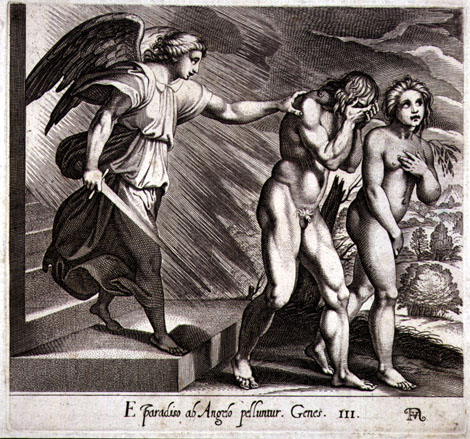The poem “The Armadillo” by Elizabeth Bishop from her compiled work, The Complete Poems (1927-1979), talks about the rendezvous of the fire balloons with the night sky during a Brazilian carnival. Although the beginning of the poem marks the poet’s momentary mirth at the sight of the fire balloons, Bishop criticizes the same fire balloons in the later part of the poem.
In the first stanza of the poem the poet describes the flying of the fire balloons. It is the time of the year when the carnival takes place, and the people consummating it fly with mad, humongous mirth the ‘frail, illegal fire balloons’. They climb the heights of mountains. This stanza ends with a comma, and hence, the sense does not actually end.
The second stanza continues the prolongation of the first stanza and says that the fire balloons ‘climbing the mountain height’ rises towards the peace-seeking saint who, amidst the on-going World War, is ‘still honored’ in these parts of the continent. The fire in the balloons lightens up the inner space and hence, flashes its light all over the sky that captures the poet’s eyes, and fills the hearts of the poet and the people. It reaches the human limits of the sky and after its fire goes out, comes down to the mundane, drab and dreary soil.
The third stanza deals with the poet’s seeming confusion as to whether the fire balloons, that are now high above in the sky, are the balloons themselves or the stars or planets. They may be the innumerable stars that spark our night-lives or the slightly colored planets, like Venus or Mars. This stanza too continues into the fourth one, and similarly like the first stanza it ends with a comma.
In the next stanza the poet talks about the movement of the balloons. If there’s a wind, the fire in the balloons may get instigated further or may get extinguished, or may move side to side or back and forth. And if there’s no wind and the balloons stay ‘still’, they cross the ‘kite sticks’ of the ‘Southern Cross’.
The fifth stanza says that the balloons, in the stillness of the atmosphere, recede, dwindle and ‘solemnly and steadily’ go up in the air, ‘forsake(ing)’ human touch. But now, the poet shifts her attention to the detrimental side of the fire balloons. She says that when they come down from their utmost peak, they ‘suddenly’ turn ‘dangerous’.
In the sixth stanza, the poet recalls the coming down of ‘another big’ fire balloon against the cliff ‘behind the house’ and like ‘an egg of fire’ spread. The cliff was ablaze with the fire and the poet could see the fire running down. The pair of owls, who had struggled to make a nest flying such a huge vertical distance, with ‘black-and-white’ feathers and ‘pink’ flesh underneath, fled, shrieking in fear.
In the seventh stanza, the poet supposes the destruction of the ‘ancient owls’’ nest. She looks at the scene, and finds a lone armadillo, glistening, leaving the scene—‘rose-flecked’ and in terror of the fire, put its head and tail ‘down’. And surprisingly, the poet could see a ‘short-haired’ rabbit, ‘soft’, but now turned into ‘a handful of intangible ash’; only its fixed red eyes remain.
The concluding quatrain draws an inference on the dreamy fire-balloons mimicking each other. These ‘falling’ fires bring onto Earth cries of panic and destruction, like that of the owls and the armadillo. And all the poet can do is point her ‘clenched fist’ towards the fire-balloons and helplessly condemn their detrimentality on Nature.
Critical Analysis of The Armadillo
The analysis of this poem has been divided into three parts—rhyme scheme, poetic devices and inner meaning.
Rhyme scheme: The rhyme scheme of the poem goes like a, b, a, b, although the poet does not follow it in strict order. The poem is of ten quatrains, a stanza containing four lines each, with no strict sense of ending in stanzas; some continue into the next.
Poetic devices: The poet has used a host of poetic devices like similes, alliterations and metaphors. The poet has personified the fire-balloons at few places in the poem. The armadillo is symbolic of the terror and panic of the animals in the cliff where the fire balloons crash and their fire slither into something like a forest-fire.
Inner meaning: The poem is very eco-critic in nature. Though the poem begins with the poet’s delight at seeing the fire-balloons flying in the air, the later part of the poem brings out the disastrous effects of the fire-balloons. The armadillo signifies the impromptu terror on the destruction caused by the fire when the poet says that the creature has its ‘head down, tail down’. Eco-critics hold this as one of the strongest poems that wage war against man-made disasters on Nature by man. This poem is dedicated to Robert Lowell, a confessional poet, who wrote against America’s bombing on Germany. The whole poem can be held as an allusion to the on-going World War by which destruction became man’s home. The poet can physically do nothing, but only condemn this destruction with her poetry. This poem also builds a strong emotional response in the mind of the reader against the cruelty of the balloons that, in actuality, talks of man. As we know, ‘War is destruction; peace is creation’.
Some online learning platforms provide certifications, while others are designed to simply grow your skills in your personal and professional life. Including Masterclass and Coursera, here are our recommendations for the best online learning platforms you can sign up for today.
The 7 Best Online Learning Platforms of 2022
- Best Overall: Coursera
- Best for Niche Topics: Udemy
- Best for Creative Fields: Skillshare
- Best for Celebrity Lessons: MasterClass
- Best for STEM: EdX
- Best for Career Building: Udacity
- Best for Data Learning: Pluralsight
















